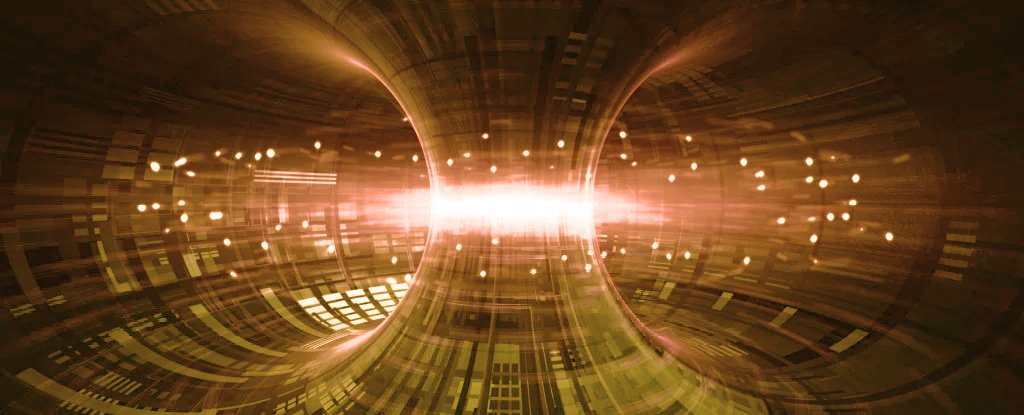South Korea’s Korea Superconducting Tokamak Advanced Research (KSTAR) reactor has set a new world record by sustaining plasma temperatures of 100 million degrees Celsius for 48 seconds.

Also Read: Devil Comet to be Visible During Total Solar Eclipse
This is announced by scientists at the Korea Institute of Fusion Energy (KFE). This achieved between December 2023 and February 2024.
Nuclear fusion, the process that powers stars like the sun, holds promise as a source of near-unlimited energy without the harmful emissions associated with fossil fuels.
Scientists have been striving to replicate this process on Earth for over 70 years with the tokamak design emerging as a leading contender for fusion reactors.
The KSTAR reactor’s achievement surpasses its previous record set in 2021, demonstrating progress in sustaining high temperatures for longer durations.
This feat, seven times hotter than the sun’s core, opens new avenues for the development of fusion energy technology.
Achieving and maintaining temperatures of 100 million degrees Celsius presents technical challenges. The KSTAR team employed tungsten divertors, essential components that expel waste gases and impurities from the reactor to enhance heat tolerance and improve plasma confinement.
The success of KSTAR’s experiments provides invaluable insights for the International Thermonuclear Experimental Reactor (ITER) project, a multinational endeavor planned at demonstrating the feasibility of fusion energy.
Tungsten divertors proven effective in extending plasma confinement, are to play a crucial role in ITER’s development.
KSTAR scientists are setting ambitious goals, aiming to sustain plasma temperatures of 100 million degrees Celsius for 300 seconds by 2026.
This aligns with the vision of advancing fusion energy towards commercialization and addressing global energy needs sustainably.
South Korea’s achievement in fusion research adds to a growing list of breakthroughs in the field, including milestones reached by the Lawrence Livermore National Laboratory’s National Ignition Facility and researchers in the UK.
The KSTAR reactor, dubbed the “artificial sun,” surpassed its previous record of 30 seconds, set in 2021, by maintaining the superheated plasma at temperatures seven times hotter than the core of the Sun.
This achievement is a testament to the efforts of scientists and engineers striving to replicate the fusion reactions that power stars, offering a solution to the world’s energy needs without contributing to greenhouse gas emissions.
Also Read: SpaceVIP Unveils the World’s First Michelin-Starred Meal in Space
Nuclear fusion, the process by which hydrogen atoms are fused to form helium under extreme temperatures and pressures, holds potential as a clean and abundant source of energy.
Unlike conventional nuclear fission, fusion reactions produce minimal radioactive waste and do not contribute to long-term environmental damage.
Achieving the necessary conditions for sustained fusion reactions has been a challenge for researchers for over seven decades.
The KSTAR reactor lies in its tokamak design, a torus-shaped chamber surrounded by powerful magnetic fields that confine and control the plasma, a state of matter consisting of positively charged ions and free electrons.
Maintaining the stability of the superheated plasma, essential for triggering fusion reactions, has been a complex endeavor requiring innovative engineering solutions.
Key to the success of the KSTAR reactor is the implementation of tungsten divertors, crucial components designed to extract heat and impurities from the plasma.
By replacing carbon with tungsten, scientists were able to enhance the efficiency of the divertors, enabling the reactor to sustain higher temperatures for longer durations.
The KSTAR team has set goals for further enhancing the reactor’s performance. By 2026, they plan to extend the duration of plasma temperatures at 100 million degrees Celsius to 300 seconds, a milestone in demonstrating the feasibility of fusion energy on a commercial scale.
These efforts align with international initiatives, including the development of the International Thermonuclear Experimental Reactor (ITER) in France.
Also Read: Scientists have Discovered a Giant Volcano on Mars























